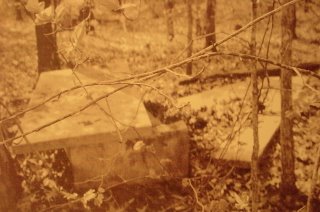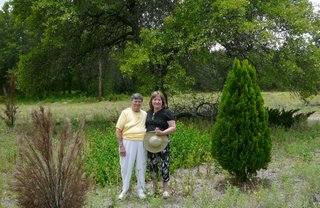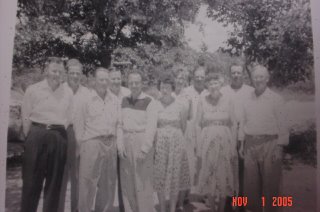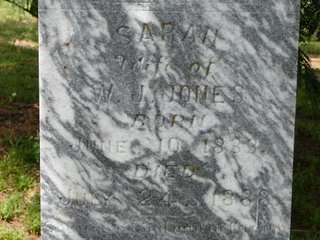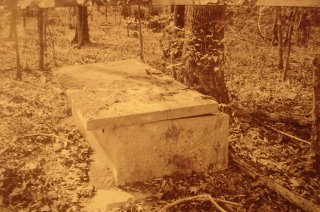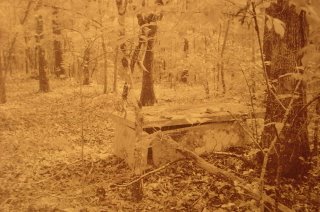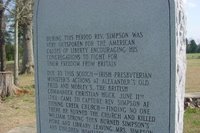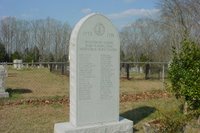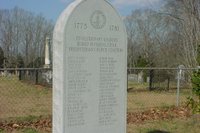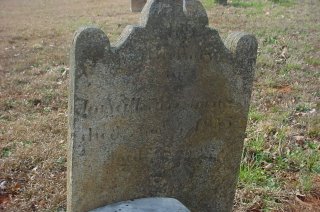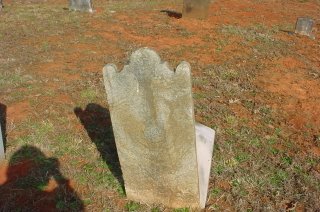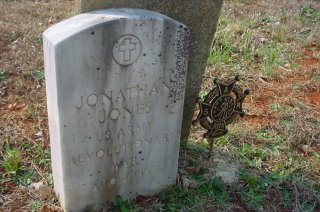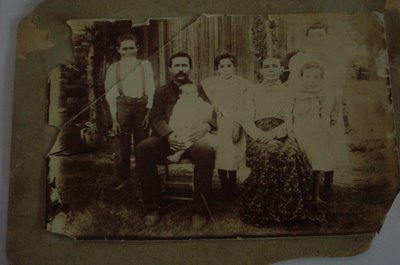Heard County, Georgia is where the next couple of generations of our Jones family lived after leaving Chester County, South Carolina. Johnathan Jones of Chester County, South Carolina, had, among his ten children a son he also named Johnathan. That son, Johnathan(sometimes spelled Jonathan), born 1804, left South Carolina and moved to Heard County, Georgia. I think he probably moved there after his father died in 1835 because he appears in the 1840, 1850, 1860, and 1870 Heard County Census, living in St. Cloud District(In 1880 that district was renamed Cooksville). He would be Minnie Lee Jones Blackford's great grandfather. His wife was named Elizabeth Logans Jones (born 1793, died 1863).
When we were in Heard County, Georgia on Thursday, March 30, 2006, we visited the Heard County Historical Center and Museum in the town of Franklin which is about 30 miles southwest of downtown Atlanta, GA. We got there about three in the afternoon and they closed at five. The museum coordinator spent the entire time with us (we were also the only persons there) and I looked through cemetery records and censuses while Jim looked through the museum. The coordinator and I talked a good deal about topics such as the Chattahoochee River that runs through Heard County, the "Gone to Texas" mentality that pervaded the area after the Civil War, and the past and present influence of the Ku Klux Klan in the area. I asked about the KKK because our Aunt Sally had told our cousin Jeanette information that related. Sally had heard old family stories that had to do with the Jones family's perception that the KKK had gotten "really bad" there in the Franklin area after the Civil War. She felt that was part of the reason they chose to leave and go to Texas. The following is a site that provides more information about the Ku Klux Klan:
http://en.wikipedia.org/wiki/Ku_Klux_Klan Oddly enough, upstairs in the museum, tucked away in a corner, is an exhibit that describes a lynching incident for which the KKK took credit. It had taken place in the Franklin area shortly after the Civil War.
The “Gone to Texas” phenomenon must have swept the area in those turbulent, economically depressed times following the fall of the Confederacy. The museum coordinator told me that people would paint “GTT” on their houses or barns to let their neighbors know what happened to them. In a fun side note I might add that I was given a related tee shirt by my daughter a couple or years ago. One of the tasks in her job is helping organize and present orientations for incoming freshmen at the University of Texas at Austin. The tee shirt was left over from the orientation and had written on the front of it “Gone to Texas”.
About a week or so after we returned home to San Antonio, I received a letter from the museum coordinator with whom I visited at the Heard County Historical Society. I had left my name and address at her request in case she “turned up” more information. She wrote that she and the other lady (Selmah B.) who works at the museum had found what she thought might be our Jones family listed in the new Heard County cemetery book in a newly “found” old cemetery. She gave me the email address of the Selmah and suggested that I contact her to get further information. I did so immediately and she sent me a page from their book, a map showing the location of the cemetery and later mailed pictures of the grave sites.
The following is the entry regarding the Jones/Bruce family.
Cemetery located at the end of Judy Court, west of driveway leading to house #120. The area is fenced, with large trees and undergrowth. It appears to have once been a large cemetery. There are many ground depressions and broken stones. Several of the graves appear to have been dug into. A Broken concrete wall surrounds a portion of the cemetery. There are at least 16 unmarked graves.
Jones, Margaret W. 1804 1841
Bruce, S.G. (Samuel G.)
Born South Carolina 03/17/1837 07/28/1884
(It is my thought that Margaret was a sister of Jonathan’s who came from S.C. with the Jones family. Jonathan had a daughter, also named Margaret, listed as “deaf and dumb” on a couple of the censuses who was born in 1841. The younger Margaret was married to the Samuel Bruce listed above. She and Samuel are shown on the 1850 census with a baby, Francis, living in the same household with Jonathan Jones.)
In 1860 Heard County Census, Samuel appears in household of Johnathan Jones and wife Elizabeth. He marries Margaret T. Jones, and, by 1870, is living with her and five children in the St. Cloud District.
Jones, Elizabeth Born in GA 1793 1863
Jones, Johnathan 1804 1875
Johnathan appears in the 1840, 1850, 1860, 1870 Heard County Census, living in the St. Cloud District."
Source:Cemeteries of Heard County, Georgia 1977-1999, Surveyed and Compiled By: Heard County Historical Society. First Edition, Volume I. Distributed By: Heard County Historical Society, P.O.Box 990, Franklin, Georgia, 30217. Printed in the United States of America, 2006.
It was very disturbing to me to read that “several of the graves appear to have been dug into”. I emailed the museum coordinator telling her of my concerns. I asked her if there was a county office that kept up the cemeteries, if she knew of any Jones families still in the area that might want to work on the cemetery or if perhaps we could hire someone in the area to work on restoring the cemetery. Here is her reply:
Nancy,
I am so thrilled to know you have connection to this family. This young man and I probably would not have found, it except the area has been developed since 1977 when Mrs. Eller did her survey.
I will send you copies of the graves by mail, as the photos will be much better.There is not a county office to help with the restoration. It is family and their decendants responsibility in this county. Meanwhile, I will try find out who owns the property, as the graves are located within a fenced area.An elderly lady that lived in back of the cemetery kept her eye on the graves, so I hope no one takes advantage of the fact that she died a few months ago. With undergrowth coming out, this will be some protection for them.I will see what I can find on your other family members.About the cemetery again--the ground depressions looked like someone had dug the entire casket up. Maybe if you left them as is, it would help to keep people out also. Just a thought.
So good to hear from you.
Sincerely,
Selmah B.
In the pictures, it looks as though it was Elizabeth (Logans) Jones’ grave that was dug up. It also looks as though an attempt was made on Jonathan’s grave, but that it was not completed. I expect it is the work of grave robbers looking for jewelry. Who knows how long ago this may have happened. I am very saddened by this information as I know you must be too. My only consolation is believing that the souls of those two do not reside in their graves.

